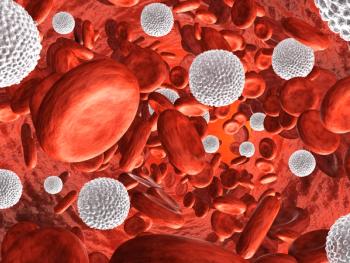
Did Rituximab Maintenance Add Benefit for DLBCL After R-CHOP?
Maintenance rituximab was tested in patients with diffuse large B-cell lymphoma who achieved complete remission after R-CHOP.
Patients with diffuse large B-cell lymphoma (DLBCL) who achieve complete remission after treatment with R-CHOP received no additional disease-free survival benefit from undergoing maintenance treatment with rituximab compared with observation, according to the results of a phase III study (
“We could not identify a clinical subgroup that benefited from rituximab maintenance therapy,” said Elly J. Lugtenburg, MD, PhD, of Erasmus MC Cancer Institute in the Netherlands, who presented these results.
The phase III study included 575 patients with stage II–IV DLBCL. At first randomization, patients were assigned to R-CHOP or an intensified dose of R-CHOP during the first 4 cycles of therapy. Patients in complete response after induction therapy were eligible for a second randomization between rituximab maintenance once every 8 weeks for 2 years (n = 185 with 149 completing treatment) or observation (n = 195).
Results from the induction phase were presented at the ASCO Annual Meeting in 2016 and showed no benefit for the intensification of rituximab during the induction phase.
The primary endpoint for the maintenance phase was disease-free survival. At a median follow-up of 19.9 months, the 5-year disease-free survival rate was 79% for maintenance and 74% for observation. There was no significant difference between the two arms.
The researchers conducted a sensitivity analysis because the required number of events was not reached; however, the analysis concluded that the study’s conclusion would not change even if the required number of events had occurred, Lugtenburg said.
According to Lugtenburg, treatment in the maintenance phase was generally well tolerated. Grade 1 or worse adverse events occurred in 56% of patients, and grade 3/4 events occurred in 23%. Serious adverse events occurred in 19% of patients. No adverse event led to death.
Discussing these results,
Looking at those subtypes, she said that in aggressive lymphomas, upfront therapy has a chance to cure the patient and most relapses occur in the first 2 years, “so any kind of maintenance therapy will likely be ineffective.”
In contrast, in indolent lymphomas, late relapses can occur, “so this may allow us to think about maintenance therapy” in this group, she said.
Newsletter
Stay up to date on recent advances in the multidisciplinary approach to cancer.

















































































